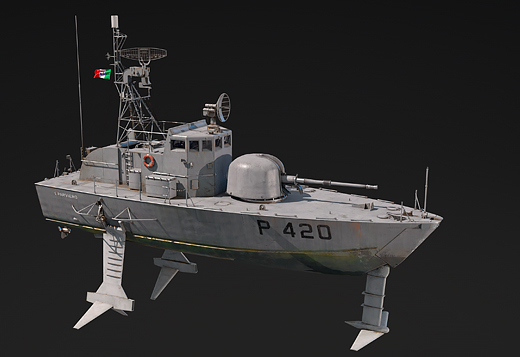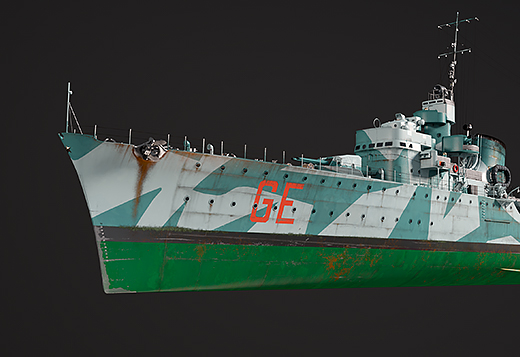
- For PC
- For MAC
- For Linux
- OS: Windows 10 (64 bit)
- Processor: Dual-Core 2.2 GHz
- Memory: 4GB
- Video Card: DirectX 11 level video card: AMD Radeon 77XX / NVIDIA GeForce GTX 660. The minimum supported resolution for the game is 720p.
- Network: Broadband Internet connection
- Hard Drive: 22.1 GB (Minimal client)
- OS: Windows 10/11 (64 bit)
- Processor: Intel Core i5 or Ryzen 5 3600 and better
- Memory: 16 GB and more
- Video Card: DirectX 11 level video card or higher and drivers: Nvidia GeForce 1060 and higher, Radeon RX 570 and higher
- Network: Broadband Internet connection
- Hard Drive: 62.2 GB (Full client)
- OS: Mac OS Big Sur 11.0 or newer
- Processor: Core i5, minimum 2.2GHz (Intel Xeon is not supported)
- Memory: 6 GB
- Video Card: Intel Iris Pro 5200 (Mac), or analog from AMD/Nvidia for Mac. Minimum supported resolution for the game is 720p with Metal support.
- Network: Broadband Internet connection
- Hard Drive: 22.1 GB (Minimal client)
- OS: Mac OS Big Sur 11.0 or newer
- Processor: Core i7 (Intel Xeon is not supported)
- Memory: 8 GB
- Video Card: Radeon Vega II or higher with Metal support.
- Network: Broadband Internet connection
- Hard Drive: 62.2 GB (Full client)
- OS: Most modern 64bit Linux distributions
- Processor: Dual-Core 2.4 GHz
- Memory: 4 GB
- Video Card: NVIDIA 660 with latest proprietary drivers (not older than 6 months) / similar AMD with latest proprietary drivers (not older than 6 months; the minimum supported resolution for the game is 720p) with Vulkan support.
- Network: Broadband Internet connection
- Hard Drive: 22.1 GB (Minimal client)
- OS: Ubuntu 20.04 64bit
- Processor: Intel Core i7
- Memory: 16 GB
- Video Card: NVIDIA 1060 with latest proprietary drivers (not older than 6 months) / similar AMD (Radeon RX 570) with latest proprietary drivers (not older than 6 months) with Vulkan support.
- Network: Broadband Internet connection
- Hard Drive: 62.2 GB (Full client)
The Scimitar is a late 1950’s subsonic twin engine naval jet strike fighter, developed by the renowned British Supermarine aircraft manufacturer. Soon, pilots in War Thunder will have the chance to take control of the Scimitar F.1, joining the ranks of the British aviation tree in the upcoming major update
Briefly: An early British Cold War naval jet strike fighter, possessing a high degree of versatility thanks to its combination of good flight characteristics and suspended ordnance options.
Scimitar F.1, jet fighter, Great Britain, VI rank.
Pros
- Good flight characteristics
- Wide selection of secondary weapons
Cons
- Subsonic
- No afterburner
Development of what would eventually turn out to be the Supermarine Scimitar began as early as the late 1940’s, with the Supermarine company starting work on developing an undercarriage-less naval jet fighter, following a specification issued previously by the Admiralty.
During development, several prototypes were built and tested while at the same time the design of the machine continued to change and evolve. Eventually, however, the undercarriage-less concept was dropped and the machine was even reclassified to a low altitude strike aircraft, with the Royal Navy ordering 100 units of the latest prototype design - the Type 544 - into production in 1954. The Type 544 prototype first flew in January 1956, while the first production version of the Scimitar ran off the assembly line a year later in 1957.
The Scimitar entered service with the Fleet Air Arm in 1957. However, the carriers of the Royal Navy at the time were rather small while the Scimitar was a relatively large aircraft resulting in high accident rates which would plague the Scimitar’s service career. Furthermore, the Scimitar was a highly demanding aircraft from a maintenance standpoint, making it even less popular with its crews.
As a result, the Supermarine Scimitar only had a relatively short service career with the FAA, which withdrew the Scimitar from active service in 1966. From that point, the Scimitar was relegated to training units and continued being used as a training aircraft until 1970 before being ultimately decommissioned from active service. In total, 76 Scimitars were built during their limited production run, of which 39 were lost on account of various accidents.
In War Thunder, the Supermarine Scimitar F.1 will be a new jet fighter awaiting pilots at rank VI of the British aviation tree in the upcoming update major. Although historically speaking, the Supermarine Scimitar F.1 has a less than stellar service record owed mainly due to high maintenance requirements and numerous accidents, these problems are something that War Thunder pilots won’t be affected by in-game and they’ll have the chance to fully take advantage of the Scimitar’s excellent flight characteristics and combat versatility!
Before we dive into all the things carried by the Scimitar that can go boom and make others go boom as well, it’s certainly worth talking about the Scimitar F.1 itself first. Namely, the heart and soul of the Scimitar F.1 is represented by its two Rolls-Royce Avon 202 turbojet engines. Generating an impressive 11,150 lbf (5,057 kgf) each, the Avon engines on the Scimitar allow the aircraft to reach a top speed of 630-640 knots (1,170 km/h, Mach 0.95) at sea level, with climb rate ~95-105 m/s. Besides being subsonic, the Scimitar also doesn’t possess an afterburner, meaning that unlike some of the more recent additions to the game, the Scimitar F.1 will feel, from a performance point of view at least, much more like a ‘classic’ top jet fighter of the day and will therefore become a must-have in the collection of old school jet jockeys in the game!
However, offering seasoned War Thunder pilots a taste of nostalgia doesn’t mean that the Scimitar F.1 doesn’t bring with it a taste of the modern either. This modernity can most clearly be noticed within the Scimitar’s weapons arsenal. Besides its primary armament of four 30mm ADEN cannons, the Scimitar can also carry Bullpup air-to-ground missiles as well as early Sidewinder air-to-air missiles, thus substantially bolstering its combat capabilities. Apart from all these high tech weapons, pilots who prefer a more analog approach to warfare will naturally also have bombs and unguided rockets available to them.
Interesting: This awesome Scimitar model is brought to you by your fellow player
NovA29R by the War Thunder revenue share initiative. Read more about the revenue share here.
Overall, the Supermarine Scimitar F.1 gives British pilots a highly capable jet fighter, effective in both air battles when used as a pureblooded fighter as well as in combined battles, where pilots can take advantage of the Scimitar’s vast ordnance options to turn it into a deadly close air support aircraft.
The Supermarine Scimitar F.1 is on final approach and is expected to arrive at the top ranks of the British aviation tree with the release of the upcoming major update. In the meantime, stay tuned to the news to find out what the next major update has in store for you. There’s plenty more to come! Until then, clear skies pilots!
The War Thunder Team
Previous Development Blogs























Comments (138)
dang bro he THICC, enjoying all these jets being added to WT, this is what i like! I know others like props but jet go zoom
Interesting to see the brits get AIMs and Bullpups in the same armament before the USA does.
Both Phantoms can carry both in load-outs, and the skyhawk can carry 2 AIMS and 1 bullpup. :)
Dozer15, But can it carry a Mirage ?
Very good! I've been hoping for this for a long time
Although I'll never play it, I'm glad it's in the game. So beautiful! Definitely one of my favorite naval jets. Can we get more higher res pictures please?
That's cool and all but is there any news on a new MBT for Russia?
CF-100? CF-105? Skink? soon? maybe?
Woohoo a dovbleg! Now that everyone else (except Japan) has AGMs that can be carried on fixed wing aircraft, will the Su-7B be able to carry any?
So..... Scimitar confirmed?
No this page doesn't exist and its clearly fake because its April 1st...
Hey will the US get an F-104 this update alongside the Italians? It feels only right that the US gets a fighter that it produced before other countries...
They will most likely get one, if not two along with other nations, the versions A,C,G,J and S were datamined
Hooray! What an Awesome addition for the Britain! Ok. Are the USA going to get the F-104 this update? Yes or No?
Hopefully we will see rank VII for jets soon with the introduction of Mirage III and F-104.
Submit a complaint